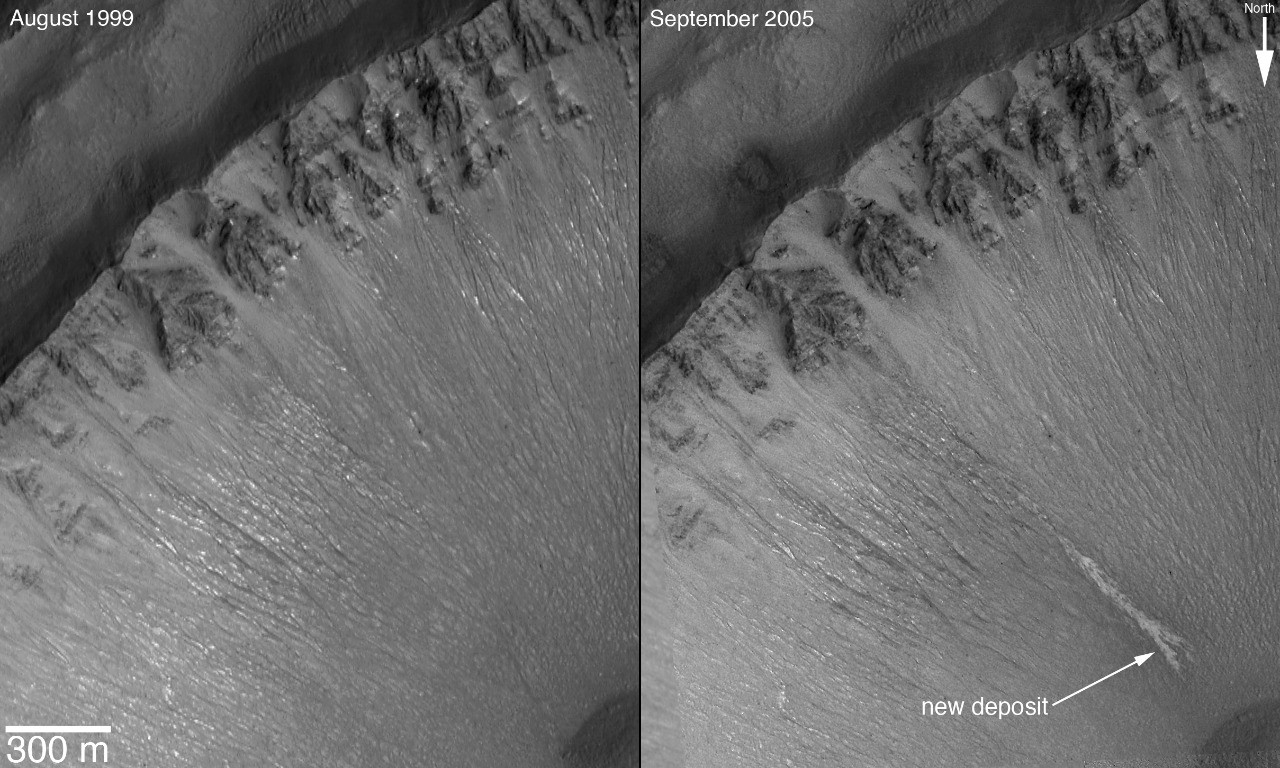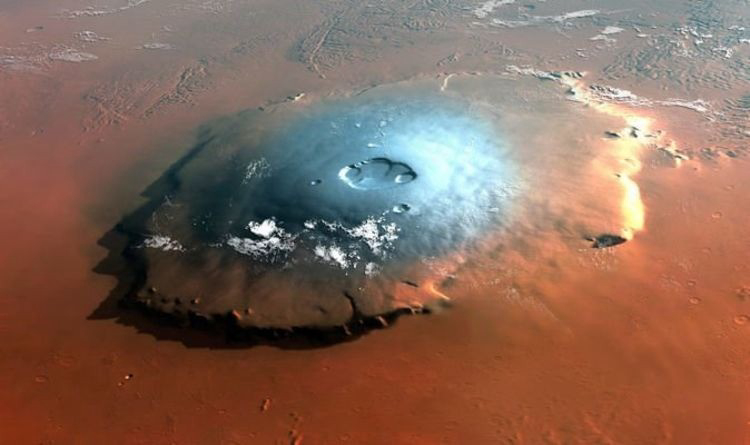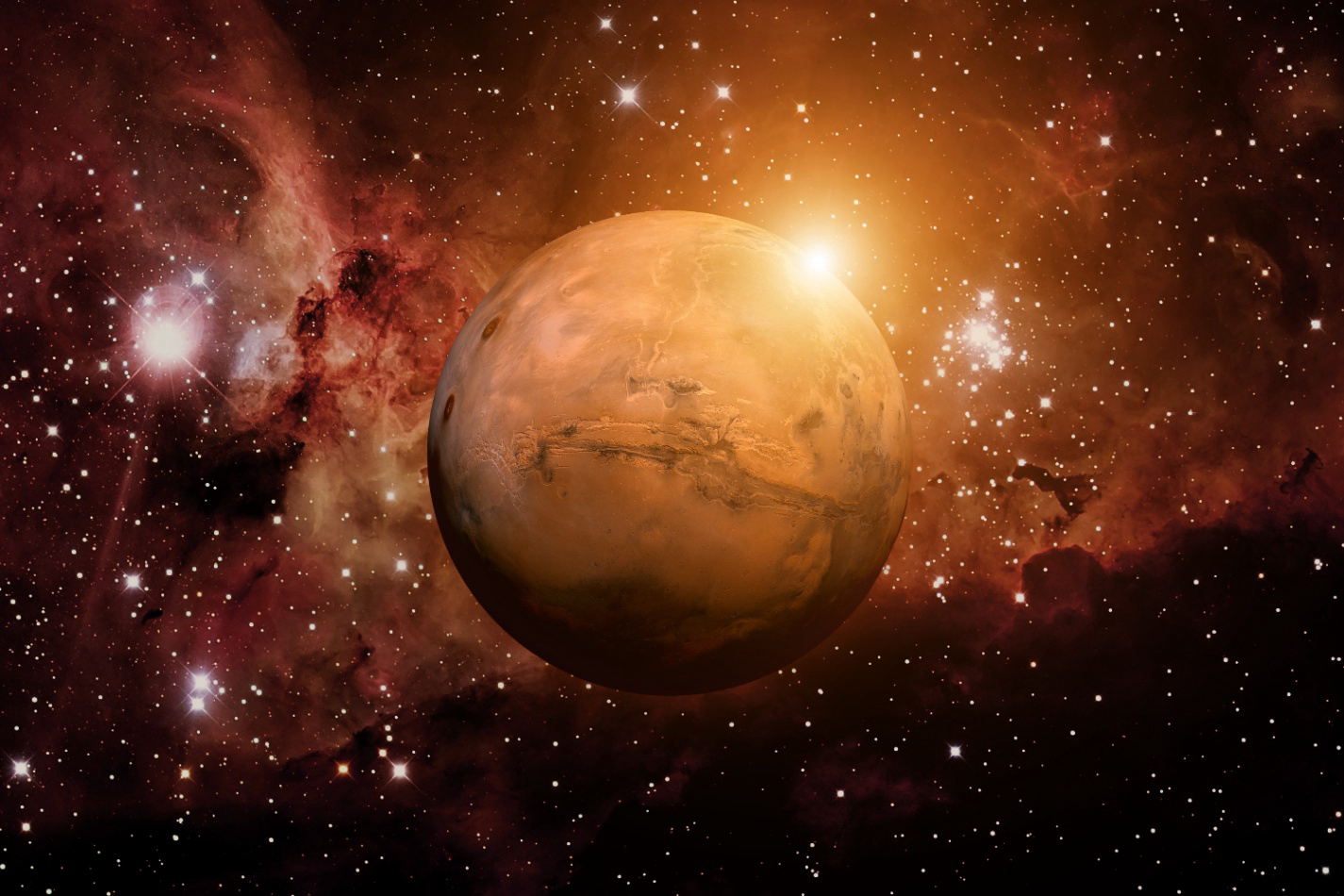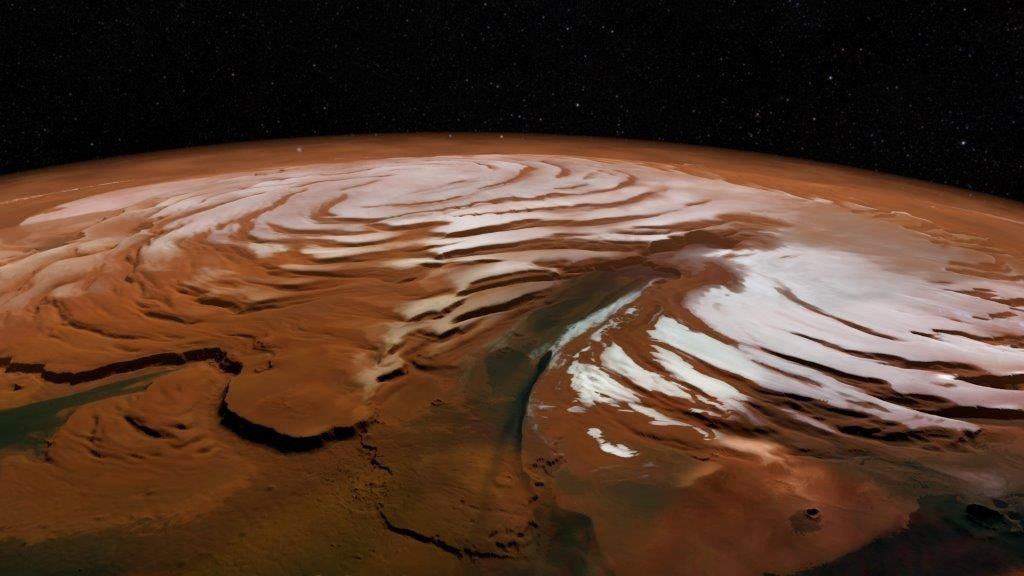 Image Credit: NASA
Image Credit: NASA
For as long as humanity has been watching the skies, we’ve been thrilled with the probability that other planets much like Earth might contain some life. Our missions to the eternal universe taught us that it’s nearly empty and uninhabited, while distinct planets within our solar system remain full of possibility. But by far, the most fascinating expectation is the red planet, Mars. This smaller, colder, more distant cousin of Earth most certainly had a wet past, where liquid water flowed on the surface for more than a billion years.

Image Credit: space.com
Scientists have outlined the tracks of ancient water across Mars ever since the 1970s. But in a published report of NASA, on 4 August 2011, “Mars Reconnaissance Orbiter” disclosed about possible flowing water during the warmest months on Mars. Mars Reconnaissance Orbiter is a spacecraft designed to study the geology and climate of Mars and relay data from surface missions back to Earth. It was launched on 12 August 2005 and reached Mars on 10 March 2006.
It uncovered that shady, finger-like details emerge and extend down some Martian hills during late spring through summer, fade in winter, and return during the next spring. Repeated studies have followed the seasonal changes in these recurring features on numerous steep slopes in the middle latitudes of Mars's southern hemisphere. These outcomes are the nearest scientists have come to discovering evidence of liquid water on the planet's surface. Frozen water, however, has been detected near the surface in many middle to high-latitude regions. Fresh-looking gullies suggest slope movements in geologically recent times, perhaps sustained by water.

"The best explanation for these observations so far is the flow of salted water," said Alfred McEwen on NASA TV, he is the principal investigator for the orbiter's High-Resolution Imaging Science Experiment (HiRISE). This suggests the action of brines, (highly concentrated salt in water) which have lower freezing points. Salt deposits over much of Mars indicate brines were abundant in Mars's past. These contemporary studies recommend brines still may form near the surface today in limited times and places. If further study of the recurring flows supports evidence of brines, these could be the first known Martian locations with liquid water. There's moreover a probable dry lake on Mars, named Gale crater, near the north western part of Mars. And scientists chose Gale crater as the landing site for spacecraft because it has many signs that water was present over its history. "It's a mystery now, but I think it's a solvable mystery with further observations and laboratory experiments," McEwen said.

Image Credit: space.com
In 2011, a car-sized rover, “Curiosity”, was designed to explore Gale Crater on Mars as part of NASA's Mars Science Laboratory mission. Curiosity was launched on 26 November 2011 and landed Gale on 6 August 2012. Curiosity was designed to go beyond the basic research for the history of water. And recently in 2020, “Perseverance rover” and a helicopter drone was launched under the Mars 2020 mission by NASA's Mars Exploration Program. It was launched on 30 July 2020 and will touch down on Mars on 18 February 2021. The Perseverance rover will seek signs of ancient life, collect rock and soil samples and signs of life for a possible return to Earth.

Image Credit: NASA
As always, the only route we will discover the truth is by executing more strategies with definitive techniques. The search for present-day water on Mars is expanding quickly. And for good reason, improved knowledge of Mar's geologic diversity and history and an emphasis on water-detection quantity techniques are all upholding the Mars-life search, granting scientists more reason to believe that they just might find something unusual.
(Source - Nasa.gov / Wikipedia)
